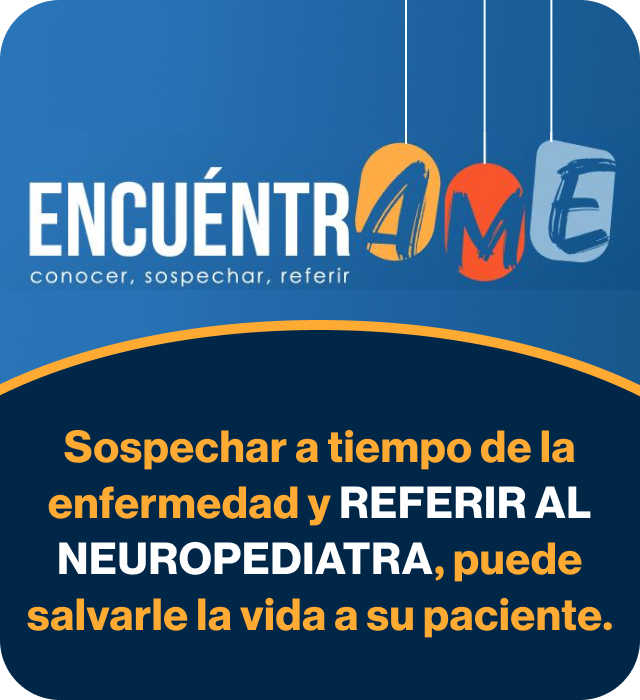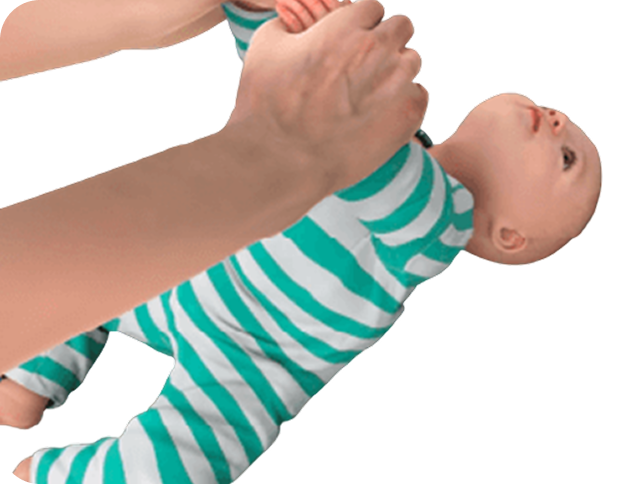

Beneficios del diagnóstico médico temprano de la AME

Obtener un diagnóstico en el menor tiempo posible es fundamental para que las terapias que existen actualmente tengan éxito.3
El diagnóstico temprano de los niños con AME tipo 1 permite que el tratamiento inicie antes de que exista un compromiso nutricional y se presente un daño neurológico y respiratorio.12
Además, el diagnóstico temprano puede ayudar a los padres a prepararse de mejor forma para enfrentar la enfermedad.12
Debido a esto, el médico de primer contacto tiene un papel esencial para la sospecha temprana y la referencia de los pacientes con AME a los servicios de neuropediatría, para que reciban la atención adecuada.13

Para recibir mayor información exclusiva acerca de la AME
Referencias
Arnold WD, Kassar D, Kissel JT. Spinal muscular atrophy: diagnosis and management in a new therapeutic era. Muscle Nerve. 2015 Feb;51(2):157-67.
Schorling DC, Pechmann A, Kirschner J. Advances in Treatment of Spinal Muscular Atrophy - New Phenotypes, New Challenges, New Implications for Care. J Neuromuscul Dis. 2020;7(1):1-13.
Bolaño Díaz CF, Morosini M, Chloca F, et al. El difícil camino al diagnóstico del paciente con atrofia muscular espinal. Arch Argent Pediatr 2023;121(2):e202102542.
Mercuri E, Finkel RS, Muntoni F, et al; SMA Care Group. Diagnosis and management of spinal muscular atrophy: Part 1:Recommendations for diagnosis, rehabilitation, orthopedic and nutritional care. Neuromuscul Disord. 2018 Feb;28(2):103-115.
Atrofia muscular espinal proximal tipo 1. Disponible en: https://www.orpha.net/consor/cgi-bin/OC_Exp.php?Expert=83330&lng=ES. Consultado el 23 de octubre de 2023.
Markowitz JA, Tinkle MB, Fischbeck KH. Spinal muscular atrophy in the neonate. J Obstet Gynecol Neonatal Nurs. 2004 Jan-Feb;33(1):12-20.
Pera MC, Cora i G, Berti B, et al. Diagnostic journey in Spinal Muscular Atrophy: Is it still an odyssey? PLoS One. 2020 Mar 23;15(3):e0230677.
Kolb SJ, Kissel JT. Spinal Muscular Atrophy. Neurol Clin. 2015 Nov;33(4):831-46.
D'Amico A, Mercuri E, Tiziano FD, Bertini E. Spinal muscular atrophy. Orphanet J Rare Dis. 2011 Nov 2;6:71.
Harris SR. Congenital hypotonia: clinical and developmental assessment. Dev Med Child Neurol. 2008 Dec;50(12):889-92.
Han JJ, McDonald CM. Diagnosis and clinical management of spinal muscular atrophy. Phys Med Rehabil Clin N Am. 2008 Aug;19(3):661-80, xii.
Qian Y, McGraw S, Henne J, et al. Understanding the experiences and needs of individuals with Spinal Muscular Atrophy and their parents: a qualitative study. BMC Neurol. 2015 Oct 24;15:217.
Davidson JE, Farrar MA.
